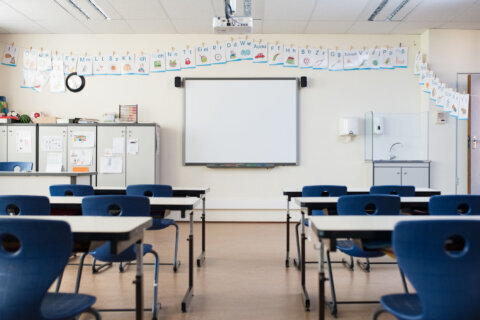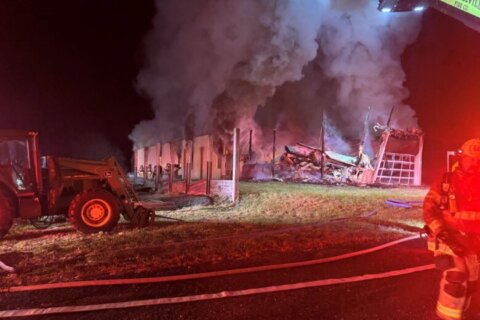WASHINGTON — After allegations that Loudoun County public schools were isolating children with special needs in makeshift cells and improperly restraining them, Virginia’s Department of Education’s investigation has found isolated mistakes, but “no evidence of systemic failure.”
In March, nine state lawmakers asked Virginia’s secretary of education to investigate, after a report in the Loudoun Times-Mirror included a photo of a student at Belmont Ridge Middle School trying to climb out of a small pen where she was being kept, isolated from other students in the classroom.
The VDOE report, dated Aug. 22, reviewed the Loudoun County public school system’s policies and procedures surrounding restraint and seclusion, interviewed parents, teachers, and administrators, and conducted in-site visits.
While Virginia hasn’t enacted any statewide regulations about restraint and seclusion in public elementary and secondary schools, it has guidelines for doing so, which are in line with the U.S. Department of Education’s guidelines — often referred to as “15 Principles.”
According to LCPS guidelines:
“Physical restraint (and seclusion) should only be used in an emergency, ie., a sudden, urgent, usually unexpected situation that requires a person(s) to take immediate action avoid harm, injury, or death to a student or to others when there is an immediate danger to the student and/or to others.”
The guidelines also say physical restraint should only be used for the period of time needed to ensure safety, and no longer than three minutes per restraint. Other guidelines forbid any restraints that could hamper a student’s breathing.
The VDOE investigation commended Loudoun County’s training for staff, and “strong school-based crisis teams and procedures.”
However, the report found one administrator wasn’t aware that a medical evaluation is called for after students are secluded. The guidelines also call for an evaluation after a student is restrained, and the administrator was aware of that requirement, the report found.
The investigation found the school system has been successful in providing appropriate rooms to help students decompress in emergency situations.
The report describes a seclusion room at an unnamed county elementary school. “The school does have a seclusion room that was formerly an empty office,” the report stated. “Efforts have been made this school year to make it more welcoming by including bean bags, a desk and chair, and an easel. The door does lock from the outside but the lock is not used. Staff has had to physically hold the door shut in the past.”
According to administrators interviewed by the VDOE, students can voluntarily go into the room for a maximum of 30 minutes. “Previously, the room was called the ‘chill room.’ Now it is called the ‘Zen room,'” according to the report.
The report said a Child Protective Services review of the incident at Belmont Ridge determined the claim of mistreatment was unfounded.
“Parents did not have the same level of understanding of the nature of restraint and seclusion. Seclusion was particularly misunderstood,” according to the VDOE study. “While we do not dismiss their seriousness, nothing in our review suggested that the incidents reported by parents were more than isolated, i.e., we saw no evidence of systemic failure to comply with the LCPS Guidelines.”
Loudoun County Superintendent Eric Williams said in a statement: “We appreciate VDOE’s review are generally pleased with the findings, but I want to emphasize that we have work to do to improve our policies, procedures, and practices in the area of special education, generally, and restraint and seclusion specifically.”








